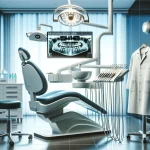How Do Video Producers Select the Right Lens for a Scene?
In the art of filmmaking, choosing the right lens can make all the difference. We’ve gathered insights from four seasoned video producers, including an executive producer and a creative director, to share their strategies. From considering aesthetics, environment, and budget to evaluating narrative through focal length, discover their expert approaches to lens selection for the perfect scene.
- Consider Aesthetic, Environment, and Budget
- Align Lens Choice with Creative Intent
- Assess Composition and Visual Impact
- Evaluate Narrative Through Focal Length
Consider Aesthetic, Environment, and Budget
Of all the tools producers leverage to make videos, lens choice can have one of the biggest influences on the look and feel of any given project or scene. Naturally, this means it can feel like a daunting decision for creators to make.
For me, choosing the right lens really boils down to three main variables: desired aesthetic, filming environment, and budget. Generally, I start with several best-case-scenario options based on the film’s desired look. From there, I consider where the filming will take place—inside, outside, or both? If outside, how well does this lens react to sunlight? If inside, how does it perform in small spaces? Finally, which of the options are within the project’s price range? Doing a bit of research to answer these questions will go a long way in helping you narrow down your options to some realistic contenders.
Like any decision in life, compromises are often made. As creators, it’s our job to be problem-solvers who can adapt to the situation at hand.
 Gabe Roy
Gabe Roy
Founder & Creative Director, Zest Media Productions
Align Lens Choice with Creative Intent
Selecting the right lens for a scene involves a thoughtful approach by considering several key factors.
First, understanding the purpose of the scene is essential in determining the mood and message to be conveyed. This informs the choice between wide-angle or telephoto lenses based on whether the scene requires expansive landscapes or close-up emotional moments. Additionally, analyzing lighting conditions helps decide on lenses with wide apertures for low-light situations, ensuring well-exposed images without compromising quality.
Second, framing and composition play a significant role in lens selection, with consideration given to the desired depth of field and the lens’s unique characteristics such as distortion and sharpness. Ultimately, the creative intent of the project guides the lens choice, encouraging experimentation to achieve a unique visual style that enhances storytelling and captivates the audience.
 Arum Ka
Arum Ka
Digital Marketing, VideosID
Assess Composition and Visual Impact
Selecting the right lens is a crucial aspect of photography that can truly elevate a shot. When choosing a lens, it is essential to consider the scene you are capturing and the composition you wish to achieve. Take your time to assess the distance between the camera and the subject, as this will largely determine the focal length of the lens you need.
Additionally, consider the visual impact you aim for, and take into account factors such as depth of field, distortion, and perspective. Of course, it also depends on personal preferences and the style you aim to achieve. Whether you choose a wide-angle, telephoto, or prime lens, with the right approach and some experimentation, you will be well on your way to capturing stunning photographs.
 Jared Floyd
Jared Floyd
Executive Producer, Ajax Creative
Evaluate Narrative Through Focal Length
I assess the logistical constraints, lighting conditions, and actions within the scene to determine my aperture requirements and spatial limitations. This assessment also guides me in deciding whether any Steadicam/Easyrig movement is feasible, or if I must remain stationary.
Then, I evaluate how my choice of lens will influence the narrative. Different focal lengths can drastically alter the depth of field and the viewer’s perception of the subject’s relationship with their environment. For instance, shooting with a wide-angle lens that keeps everything in focus can elicit a different emotional response compared to capturing close-ups with a shallow depth of field.
 Michael Shafia
Michael Shafia
Producer, Cinedyne Films Inc
Submit Your Answer
Would you like to submit an alternate answer to the question, “Video producers, what’s your approach to selecting the right lens for a scene?”






